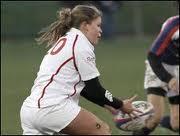Main Menu
Latest Blog Entry
User login
Why agility training is like learning to ride a bike
No pedals, no stabilisers
If, like me, you learnt to ride a bike using stabilisers, you might remember the various attempts of trying to do it without them.
For me this involves vague memories of pedalling like a lunatic with my Dad saying “I’ve got you” (when he blatantly hadn’t) and me steering into ditches.
I now have the joy teaching my kids how to ride a bike (or rather creating environments where they learn themselves). I got great advice from Ralph Colman cycles and bought a balance bike for Daisy. The reasoning was that the pedalling is easy, it is the balancing that is tricky for toddlers.
She rode this for about 18 months, then we switched to a pedal bike on her 4th birthday. After a few wobbly starts she was off and cycling on her own, no stabilisers. She can now do a 2 mile loop around our village with no trouble.
How does this relate to agility training?
Movement in sport can be classified as requiring 3 things:
- Force stabilisation (balance)
- Force reduction (braking)
- Force production (propulsion or pedalling for cycling!) (Vern Gambetta’s performance paradigm).
A lot of sport coaches work only on force production, mainly because it is easily measurable. How high can you jump? How much can you squat? How fast can you run 10 metres in? The problem with this is that very rarely do you have to do these things in isolation when playing sport.
 What happens at the end of your 10m run? You either have to stop, make change of direction, execute a skill or make contact with an opponent.
What happens at the end of your 10m run? You either have to stop, make change of direction, execute a skill or make contact with an opponent.
What happens after you jump? You have to land!
Just working on force production (which looks like a quick fix) is a narrow focus and has a very limited application at best, and a high potential for injury at worst.
If you get all your athletes jumping higher, or able to run faster, without teaching them how to stabilise and brake, nasty things happen to their knees.
You are teaching them how to pedal faster using stabilisers, as soon as the stabilisers come off (they step into the sporting arena) they fall over!
What we do for our athletes
If you have a balance bike, you first learn how to balance, then how to brake, then how to propel yourself.
So in order to become more agile we:
- Build a foundation that works on stability and balance as well as strength
- Work on braking (hip, knee and ankle flexion) for 2 legs and 1 leg
- Work on propulsion in all directions, starting up, then forward, sideways and turning.
Once your athlete can do this, in conjunction with their technical and tactical training, your sporting performance has a much stronger base to launch from.
This then allows the athlete to perform their technical skills more consistently, faster and more safely.
You can then start to use agility drills that require decision making as part of a systematic agility training program.
As to my kid’s cycling, Jack seems more interested in practicing reversing up hills on his balance bike. You can’t win them all.
Further reading
Client Testimonials
 Georgina Rozario: England Scrum Half
Georgina Rozario: England Scrum Half
I had the pleasure of having James as my first s&c coach when I was at University in Plymouth. I worked with him for 3 years and learnt everything I now know about training to the best of my ability. When I first saw James I was identified as a talented rugby player but had various injury and illness problems to contend with. By the end of my time with him I had become an athlete and later received my first international cap against the U.S.A.
More


Comments
[…] and so will sprint straight from the hit to beat retreating players, therefore a players ability to change direction, change speed and accelerate from a stationary position is […]
[…] soft tissue injuries around the ankle are reported frequently in tennis due to failure to meet the specific agility demands of the game. This type of injury is notorious for becoming a recurrent and chronic problem […]
[…] stretching, strengthening, plyometrics, review of landing techniques, sports specific drills and balance […]
[…] Agility […]
[…] will involve training straight line speed to improve the ability to run faster as well as agility to change direction at […]
[…] There is also an increased risk of upper limb overuse injuries. Stamina, endurance, speed and agility are equally […]
[…] need for work on Force Reduction, not just Force […]
[…] unilaterally in the vertical-horizontal and/or lateral direction, and require anteriorposterior (braking and propulsive) and mediolateral force […]
[…] a stop one and a half steps after receiving the ball, this means that every player is required to brake suddenly from different […]
[…] We must first make sure the athlete is able to withstand the forces that are applied during training, they should be able to brake before accelerating. […]
[…] 1 Body Control. This is the foundation where the importance of strength and balance are emphasised. This allows better force reduction, force stabilisation and then force production (more details here). […]
[…] training must include Force Reduction and Proprioception, as well as Force […]